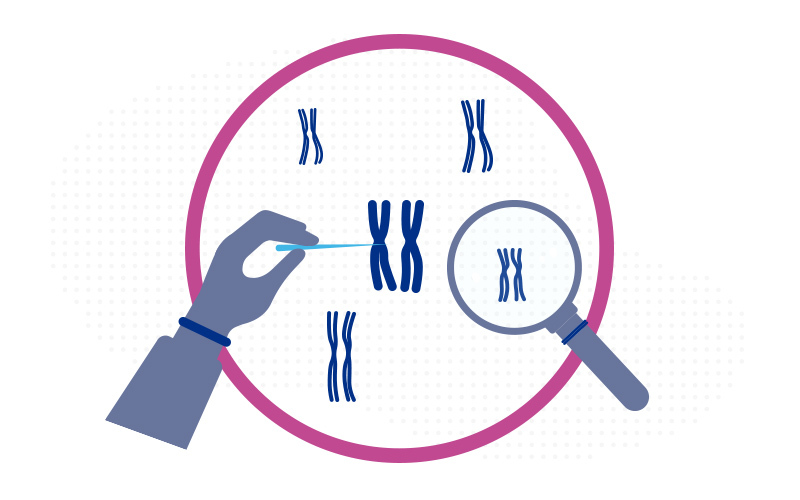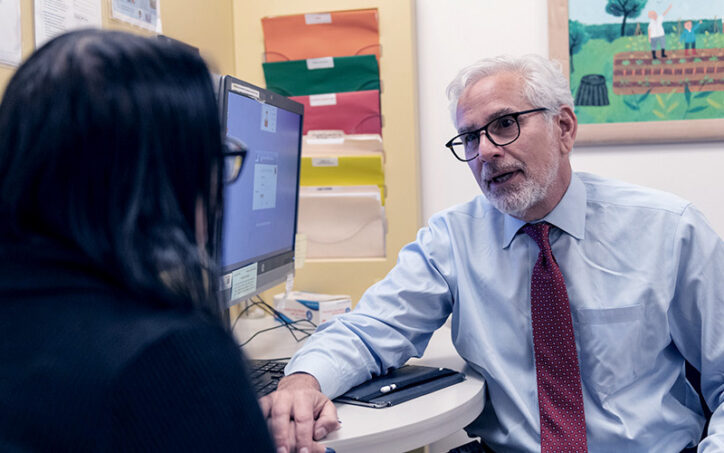Chromosomal testing expands options for exploring causes of SIDS

When an infant or young child dies without explanation, it is not uncommon for parents to blame themselves. In some cases, unfortunately, they may be wrongly investigated by the authorities, even as they yearn for answers themselves. Most often, these answers never come.
But research is slowly starting to change that.
Increasing evidence suggests that some cases of suddent infant death syndrome (SIDS) or its counterpart in older children (sudden unexplained death in childhood, or SUDC) reflect an underlying genetic condition. Dr. Richard Goldstein, who directs Robert’s Program on Sudden Unexpected Death in Pediatrics at Boston Children’s, recently led a study that performed DNA sequencing on samples from deceased children. While some of the children had known risk factors for SIDS, such as sleeping in cribs with soft bedding, 11 percent had genetic changes that likely played a role in their deaths.
New research published today finds that another genetic test called chromosomal microarray analysis (CMA) can yield additional clues. CMA probes the chromosomes looking for deletions, duplications, or small rearrangements of DNA that affect multiple genes at once. It has become a routine test for children with unexplained autism or developmental delay, unexplained congenital anomalies, or other undiagnosed conditions.
Dr. Goldstein, with Drs. Ingrid Holm and Catherine Brownstein in the Division of Genetics and Genomics, used CMA to test samples from 116 deceased infants and toddlers whose deaths were classified as SIDS or SUDC. In 12 percent of cases, they found chromosomal changes that seemed likely to contribute to the child’s death.
“We think we have enough information to say that CMA is worth considering when a child has died without explanation, and worth exploring further as a way to understand these deaths better,” says Dr. Goldstein.
More avenues to explore in SIDS and SUDC

While we need more studies to determine how much CMA adds to the results of DNA sequencing, the researchers suggest making it a routine part of the investigation of SIDS and SUDC. They hope their findings will encourage medical examiners investigating such deaths to reach out to Robert’s Program for assistance.
“Medical examiners lack the resources for genetic investigations, especially when it comes to interpreting the results,” says Dr. Goldstein. “We’re trying to move the ball forward and provide useful information. Families are so wounded by these deaths.”
Additional tests could be in the offing. Dr. Brownstein recently got a grant from the American SIDS Institute to study more complex structural changes in chromosomes that might contribute to SIDS and SUDC. Her team will use an advanced platform called Bionano Saphyr to image extremely long strands of DNA.
“This technique gives us the ability to find structural variations that are too big for traditional DNA sequencing to pick up, but too small for chromosomal microarray to detect,” says Dr. Brownstein, who is scientific director of the Manton Center for Orphan Disease Research Gene Discovery Core at Boston Children’s. “We can also pick up instances when a segment of DNA ‘flips’ to a different location on the chromosome.”
Looking at the family
Finding a genetic cause for SIDS or SUDC can comfort bereaved parents and can also provide useful information for the extended family. Genetic findings sometimes point to a medical problem that had previously gone undetected and that may affect other family members, such as a seizure disorder or a heart condition.
“We can test parents to see whether the genetic changes were inherited, and even go through the family tree and look at that gene,” says Dr. Goldstein. “Sometimes testing can help solve a family mystery, like why a grandfather or great-aunt died.”
Learn more about Robert’s Program
Related Posts :
-

Sudden, unexplained child deaths often have a genetic cause
When a baby or toddler dies without warning, parents often blame themselves. A study at Boston Children’s may provide ...
-

Can we explain sudden infant deaths? It’s complicated.
Since the early 1990s, “Back to Sleep” campaigns have urged parents to place infants to bed on their backs to ...
-

Genetic sequencing may open doors for newborns with hypotonia
When a baby is born with low muscle tone (hypotonia), the future is hard to predict, and families have a ...
-

Panel urges new genetic test for neurodevelopmental disorders
An international group of doctors and scientists, led by Boston Children’s Hospital, is urging the medical community to embrace — ...





